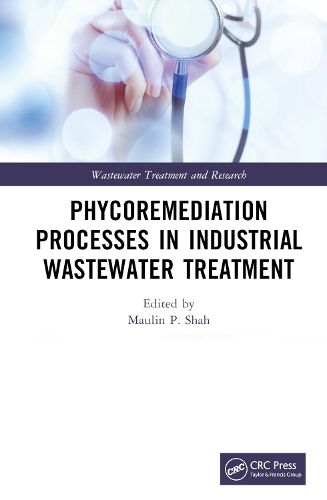Readings Newsletter
Become a Readings Member to make your shopping experience even easier.
Sign in or sign up for free!
You’re not far away from qualifying for FREE standard shipping within Australia
You’ve qualified for FREE standard shipping within Australia
The cart is loading…






Increasing population and industrialization are the key pollutant contributors in water bodies. The wastes generated by industries are highly hazardous for humans and the ecosystem and require a comprehensive and effective treatment before being discharged into water bodies. Over the years, many up gradations have been introduced in traditional water treatment methods which were expensive and ineffective especially for removal of toxic pollutants. Phycoremediation has been gaining attention due to its mutual benefit in wastewater treatment and for valuable algae biomass production. Wastewater, especially sewage and industrial effluents, is rich in pathogenic organisms, organic and inorganic compounds and heavy metals that adversely affect human and aquatic life. Microalgae use these inorganic compounds and heavy metals for their growth. In addition, they also reduce pathogenic organisms and release oxygen to be used by bacteria for decomposition of organic compounds in a secondary treatment. In this book, the potential of microalgae in wastewater treatment, their benefits, strategies, and challenges are discussed. The increasing need of finding innovative, low-cost, low-energy, sustainable and eco-friendly solutions for wastewater treatment makes the publication of a book on phycoremediation timely and appropriate.
Features:
(1) Deals with the most emerging aspects of algal research with special reference to phycoremediation.
(2) Studies in depth diversity, mutations, genomics and metagenomics study
(3) An eco-physiology, culturing, microalgae for food and feed, biofuel production, harvesting of microalgae, separation and purification of biochemicals.
$9.00 standard shipping within Australia
FREE standard shipping within Australia for orders over $100.00
Express & International shipping calculated at checkout
Increasing population and industrialization are the key pollutant contributors in water bodies. The wastes generated by industries are highly hazardous for humans and the ecosystem and require a comprehensive and effective treatment before being discharged into water bodies. Over the years, many up gradations have been introduced in traditional water treatment methods which were expensive and ineffective especially for removal of toxic pollutants. Phycoremediation has been gaining attention due to its mutual benefit in wastewater treatment and for valuable algae biomass production. Wastewater, especially sewage and industrial effluents, is rich in pathogenic organisms, organic and inorganic compounds and heavy metals that adversely affect human and aquatic life. Microalgae use these inorganic compounds and heavy metals for their growth. In addition, they also reduce pathogenic organisms and release oxygen to be used by bacteria for decomposition of organic compounds in a secondary treatment. In this book, the potential of microalgae in wastewater treatment, their benefits, strategies, and challenges are discussed. The increasing need of finding innovative, low-cost, low-energy, sustainable and eco-friendly solutions for wastewater treatment makes the publication of a book on phycoremediation timely and appropriate.
Features:
(1) Deals with the most emerging aspects of algal research with special reference to phycoremediation.
(2) Studies in depth diversity, mutations, genomics and metagenomics study
(3) An eco-physiology, culturing, microalgae for food and feed, biofuel production, harvesting of microalgae, separation and purification of biochemicals.